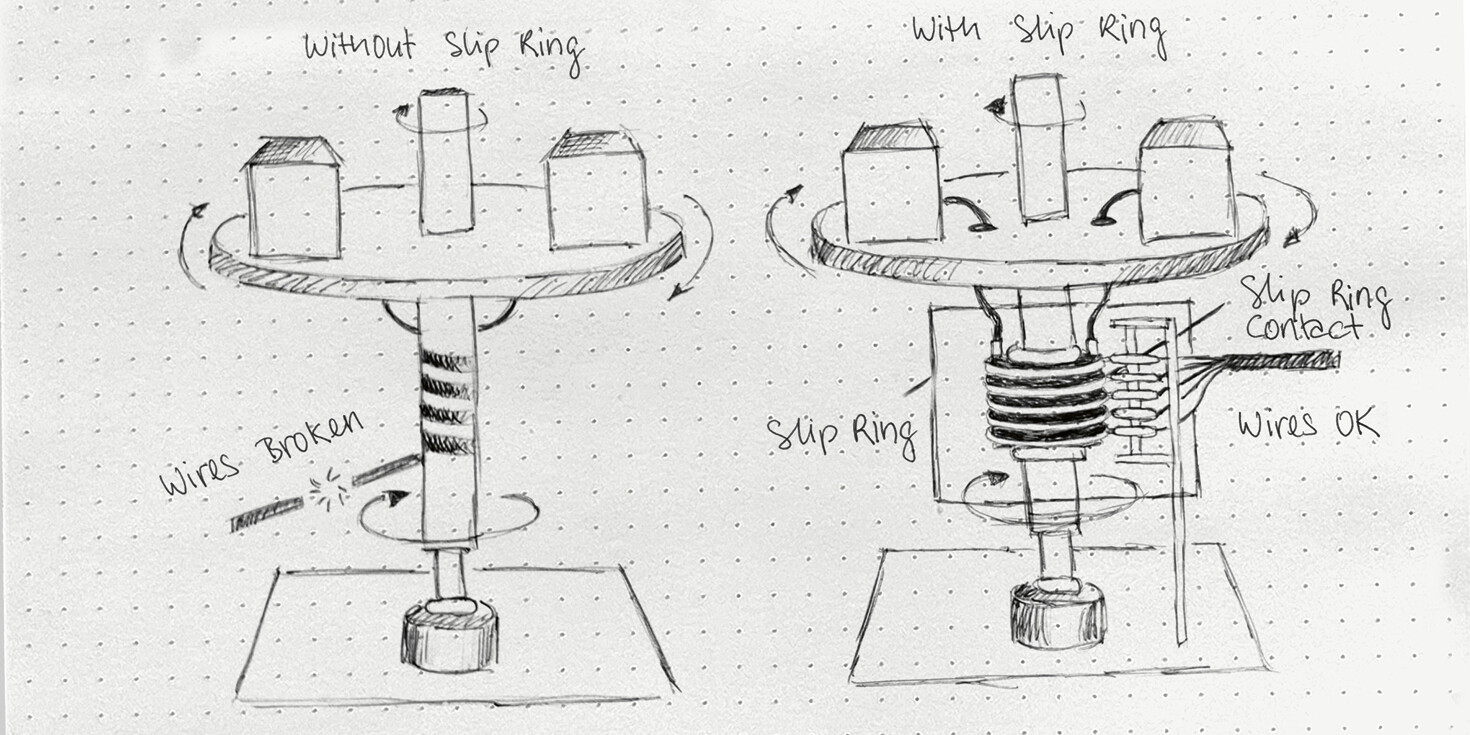How does a slip ring...
... actually work?

In 2008, Deublin Company, a member of the HOERBIGER Group, launched its own slip ring development, design, and production line. Slip rings are essential components in an increasingly electrified world. They allow electrical energy, analog signals and digital data to be exchanged continuously between a stationary source and a rotating machine. But how does this actually work? Erich Loacker, Director of Slip Rings at Deublin, explains.
Erich, what exactly is a slip ring?
Erich Loacker — Think of the lights inside a hotel’s revolving door. As the door spins, the lights need a constant power supply. If you used a regular cable, it would twist and eventually break. Instead, a slip ring is placed at the center of the rotation, allowing the stationary power source to connect to the rotating lights – keeping them on no matter how many times the door turns.
Where else are slip rings used?
EL — Slip rings are found in a wide range of industries and applications. They can be used in simple systems, like revolving doors, or in complex machinery, such as those used in computer chip manufacturing. For instance, Deublin slip rings are used on assembly lines for electric delivery vehicles, like those used by Amazon. Wind turbines also rely on slip rings to control the angle of their blades, and even the smartphone in your hand might have been manufactured with the help of a slip ring during its production.
What makes a good slip ring?
EL — A high-quality slip ring features reliable electrical contacts that maintain a strong connection under all conditions. It also protects signals from interference caused by nearby devices. Durability is key, as slip rings are often installed in hard-to-reach places, so replacing them can be costly and time-consuming. A well-engineered slip ring can withstand tens of millions – or even hundreds of millions – of rotations, minimizing downtime and ensuring long-lasting performance.
In short, slip rings are crucial for maintaining stable electrical connections in rotating systems, offering both reliability and longevity.
“A well-made slip ring can withstand tens to hundreds of millions of revolutions.”
Deublin